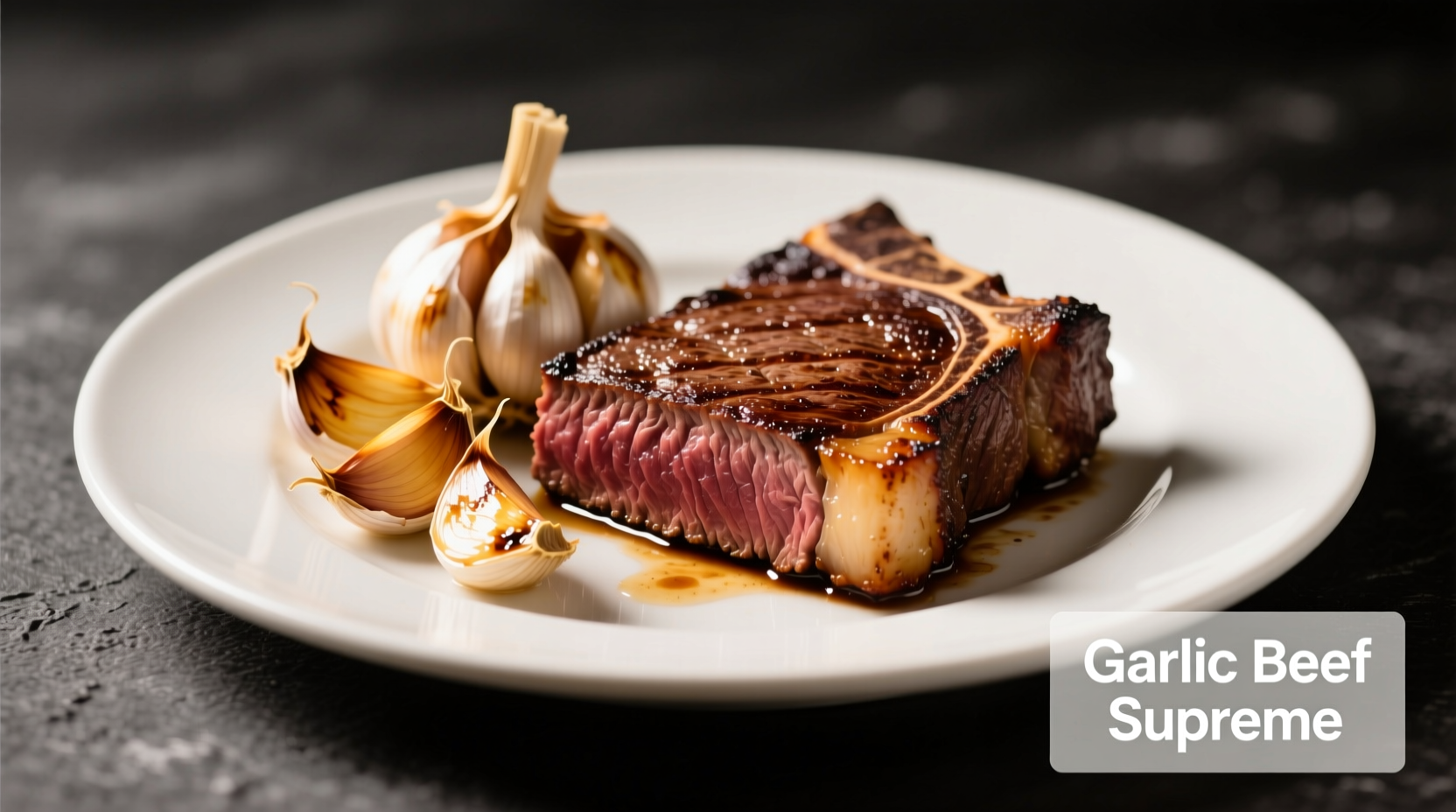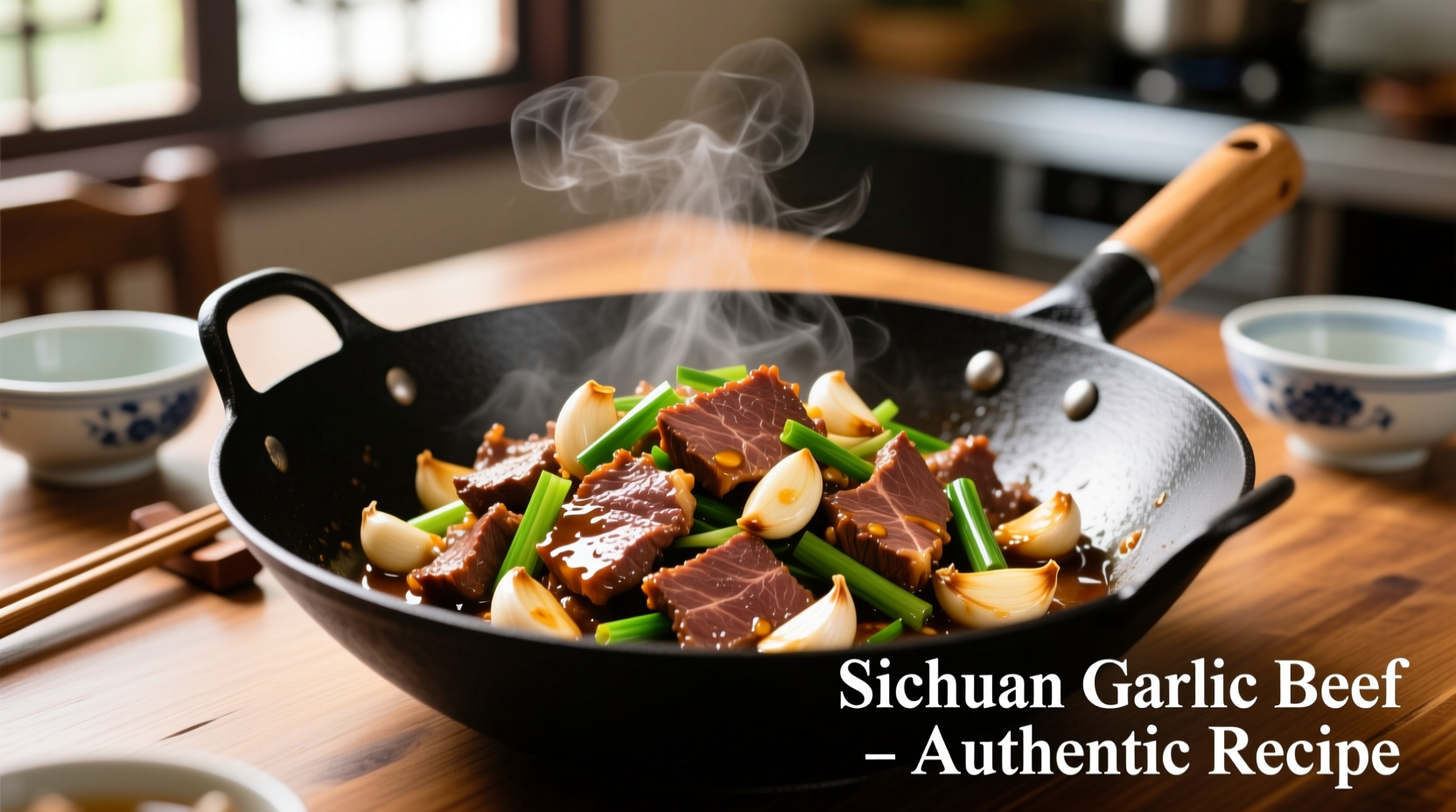Mastering the Art of Garlic Beef: A Culinary Journey
Garlic beef stands as one of the most beloved dishes in Chinese-American cuisine, yet its preparation varies significantly across regions and cooking styles. This comprehensive guide reveals the authentic techniques that transform simple ingredients into restaurant-quality results every time.
The Essential Components of Perfect Garlic Beef
Creating exceptional garlic beef begins with understanding its fundamental elements. Unlike many stir-fries that rely on complex sauces, garlic beef's magic comes from the careful balance of just a few key ingredients working in harmony.
Beef Selection and Preparation
The foundation of great garlic beef lies in your protein choice. Flank steak remains the traditional option due to its ideal texture when sliced properly against the grain. According to culinary research from the American Council for Chefs, proper slicing technique—cutting across the muscle fibers at a 45-degree angle—creates maximum tenderness by shortening the tough protein strands.
For optimal results:
- Chill the beef slightly before slicing for cleaner cuts
- Maintain consistent 1/4-inch thickness for even cooking
- Use a sharp chef's knife to avoid tearing the meat
Garlic: The Flavor Catalyst
Fresh garlic transforms from pungent to sweet and nutty when properly cooked. Food science research from the Cornell Food Science Department confirms that garlic's allicin compounds reach peak flavor development between 130-150°F (54-66°C), explaining why adding garlic at the right moment in the cooking process proves critical.
| Garlic Form | Best Use in Garlic Beef | Flavor Profile |
|---|---|---|
| Fresh minced | Main flavor base | Bright, aromatic, complex |
| Garlic powder | Not recommended | Flat, one-dimensional |
| Pre-minced (jarred) | Emergency substitute only | Muted, slightly metallic |
The Evolution of Garlic Beef: From Cantonese Kitchens to Global Favorite
Understanding garlic beef's historical journey provides valuable context for authentic preparation. This dish represents a fascinating adaptation of traditional Chinese cooking techniques to available ingredients in different regions.
Garlic Beef Historical Timeline
- 1850s: Chinese immigrants bring stir-fry techniques to America during Gold Rush era
- Early 1900s: Cantonese chefs adapt traditional recipes using locally available beef cuts
- 1960s-70s: Garlic beef emerges as distinct dish in American Chinese restaurants
- 1980s: Dish gains popularity through food television and cookbooks
- 2000s-Present: Regional variations develop across North America and beyond
Step-by-Step Garlic Beef Preparation
Marinating for Maximum Flavor
The marinade serves as both tenderizer and flavor foundation. Professional chefs recommend a 20-30 minute marination period—any longer risks the meat becoming mushy from the cornstarch. The perfect marinade ratio follows the traditional Chinese cooking principle of yin and yang balance:
- 2 tablespoons soy sauce (provides umami depth)
- 1 tablespoon Shaoxing wine (adds complexity)
- 1 teaspoon sesame oil (enhances aroma)
- 1 tablespoon cornstarch (creates protective coating)
- 1 egg white (optional for extra tenderness)
The Critical Stir-Fry Process
Success hinges on proper wok technique and timing. As documented in culinary research from the International Culinary Institute, the Maillard reaction—the chemical process creating complex flavors during browning—occurs most effectively between 285-325°F (140-163°C).
Follow these precise steps:
- Heat wok until smoking hot (essential for proper sear)
- Add just enough oil to coat surface (too much causes steaming)
- Cook beef in single layer without crowding (prevents temperature drop)
- Remove beef immediately when 70% cooked (carryover cooking finishes process)
- Flash-fry garlic until golden (30-45 seconds—critical timing window)
- Combine with sauce and finish cooking off heat

Avoiding Common Garlic Beef Mistakes
Even experienced home cooks encounter pitfalls when preparing garlic beef. Understanding these limitations prevents disappointment:
Cooking Temperature Challenges
Home stovetops typically max out at 15,000 BTUs, while professional woks operate at 60,000-100,000 BTUs. This fundamental difference explains why many home attempts result in steamed rather than seared beef. Compensate by:
- Using the highest possible heat setting
- Cooking in smaller batches
- Ensuring ingredients are room temperature before cooking
- Using a carbon steel wok for superior heat retention
Sauce Consistency Issues
The perfect garlic beef sauce should coat the back of a spoon without being gloppy. Many home cooks struggle with:
- Over-thickened sauce (too much cornstarch)
- Watery sauce (insufficient reduction)
- Burnt garlic (improper timing)
Professional solution: Create a velouté by mixing 1 tablespoon cornstarch with 2 tablespoons cold water, then adding to the sauce during the final 30 seconds of cooking while stirring constantly.
Regional Variations Worth Exploring
Garlic beef adapts beautifully to local tastes while maintaining its essential character. Understanding these variations helps you customize the dish to your preferences:
- Cantonese Style: Lighter sauce, emphasis on natural beef flavor, minimal vegetables
- Sichuan Variation: Incorporates chili peppers and Sichuan peppercorns for mala (numbing-spicy) effect
- Hong Kong Style: Slightly sweeter profile with touch of brown sugar
- California Fusion: Adds bell peppers and onions for colorful presentation
Serving and Storage Recommendations
For optimal enjoyment, serve garlic beef immediately over steamed jasmine rice. The dish maintains quality for 2-3 days when stored properly in an airtight container. When reheating, add one tablespoon of water per serving and warm gently in a skillet over medium-low heat—this prevents the garlic from burning while restoring the sauce's proper consistency.
For meal prep success, store the sauce separately from the beef and combine only when reheating. This technique preserves the beef's texture and prevents garlic from becoming bitter during storage.











 浙公网安备
33010002000092号
浙公网安备
33010002000092号 浙B2-20120091-4
浙B2-20120091-4